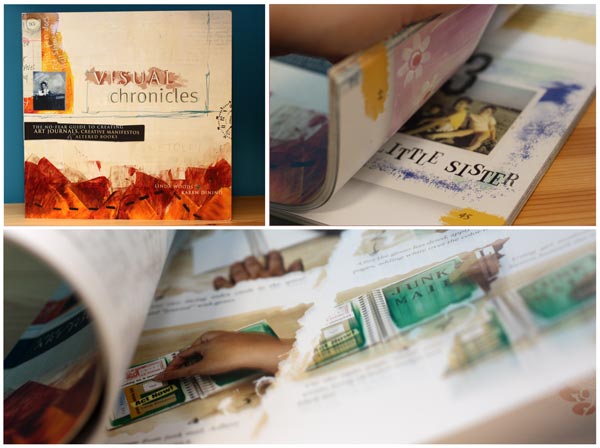How to Imitate Glass with Paint
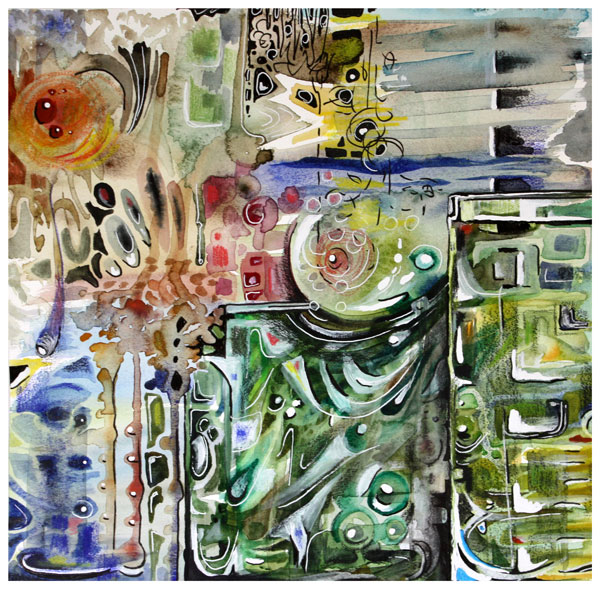
For this painting, I learned how to imitate glass. It is called “We Will Protect You,” and it’s about parents trying to protect their children. The parents have good intentions, and they do their best, but in the end, they have to let the child step into the world. I have painted two glass vases to represent the parents. The child sees the world through the parents, and even if they want to protect the child, they are fragile too.
Artistic Inspiration from Glassware
The idea for the painting began last Saturday when I went to the local library to get some ideas for the future blog posts. I saw the book called The Art of Glass. It was about Kaj Franck, a Finnish designer who was extremely skillful in designing glassware.
 Most Finns have Kaj Franck’s glassware. He didn’t design unique pieces only, but everyday glass as well. My most precious glass item from him is this red “Goblet” which was originally owned by my aunt. She passed away ten years ago, and the color of this Goblet reminds me of her vivid character.
Most Finns have Kaj Franck’s glassware. He didn’t design unique pieces only, but everyday glass as well. My most precious glass item from him is this red “Goblet” which was originally owned by my aunt. She passed away ten years ago, and the color of this Goblet reminds me of her vivid character.
After browsing few pages of the book, I knew I had to make something glass-related. It’s not the first time the glass has inspired me: see the collage inspired by Nanny Still, and I have also knitted a folk bag inspired by Oiva Toikka. Both Nanny Still and Oiva Toikka are Finnish glass designers as well.
This time, I wanted not only to find out how to imitate glass but to explain it to you too. Before beginning the bigger painting, I painted few circles on a small paper and tried to make them look like glass.
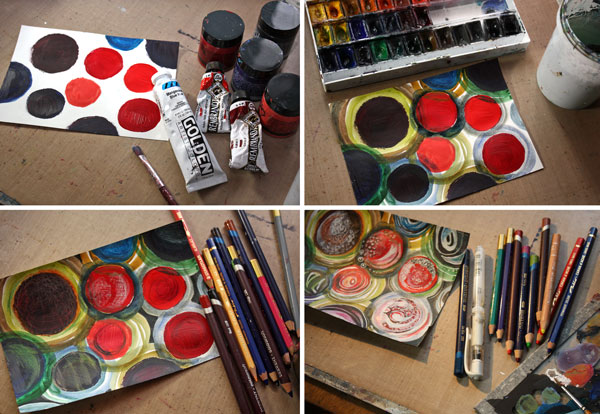
I used acrylic paints to paint the circles and then watercolors to add more circles around the previous ones. The shapes were softened with colored pencils. Then I added white with acrylic paint and a gel pen, and black with a PITT Artist Pen.

I made each circle a bit different. I was not fully satisfied with them, though. The center circles were too solid in color. I decided to start the bigger painting with watercolors as they are easier for making transparent layers.
8 Tips on How to Imitate Glass

1) Paint several transparent layers which intersect each other. Use a lot of water to create thin layers.

2) Use a lot of hues and shades of the same color. Mix colors to get new tones which have slight differences from each other. Use small spots of other colors too as glass reflects its surroundings.

3) Paint geometric shapes like circles, squares, half-circles, and triangles.

4) Add white with acrylic paint. When painting the white shapes, soften one side of them by adding water.
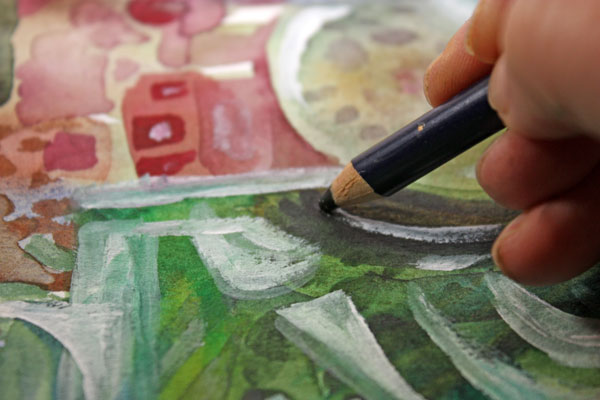
5) Use a black colored pencil to add dark near the sharp edges of white areas. Make the dark areas soft too.
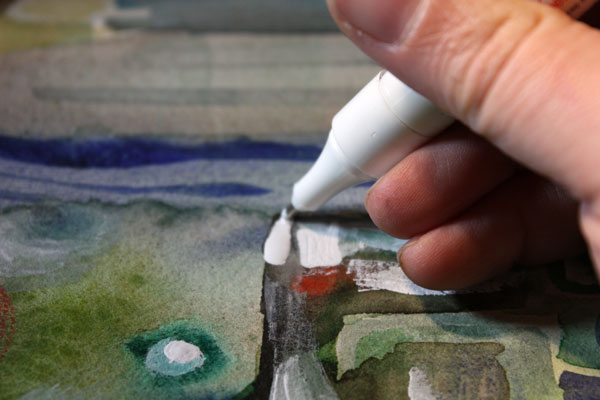
6) With correction pen, add brilliant white to highlight parts of the white areas.

7) Add jet black with a black marker (I used a brush tip PITT Artist Pen) to make dark areas pop as well.
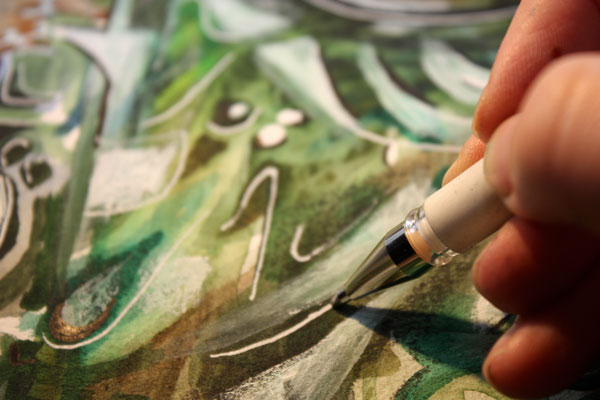
8) Finish with thin lines using a gel pen and a black marker. It will make your glass look a bit thinner and more elegant.

What kind of glass do you like the most? Does mimicking materials interest you too?
Let me be your mentor in art: Subscribe to my weekly emails!
Art Journaling with Still Lives
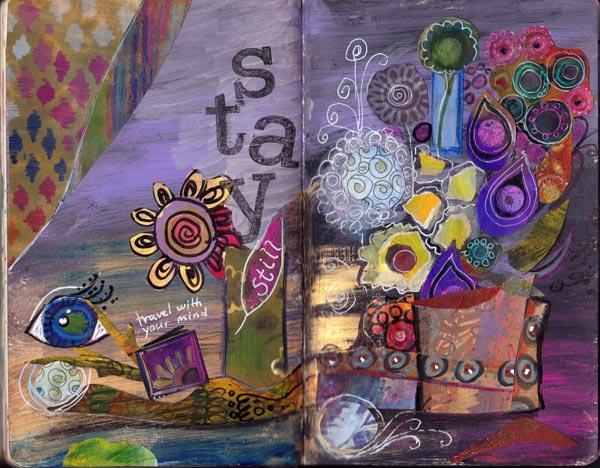
For the last couple of years, I have felt drawn to still lives. I even have the Pinterest board of the ones that I especially like. I used to think that old still lives are very conventional but they really are not! There can be anything happening in the painting, like a squirrel running on the table, and there can be a wide variety of objects too. And even the flowers look magical! Art journaling has a lot to learn from the old masters.
So, I thought it could be a fun concept to create still lives by applying the tips from the previous blog post. I could combine odd paper pieces and doodles with text and create surreal art journal pages.
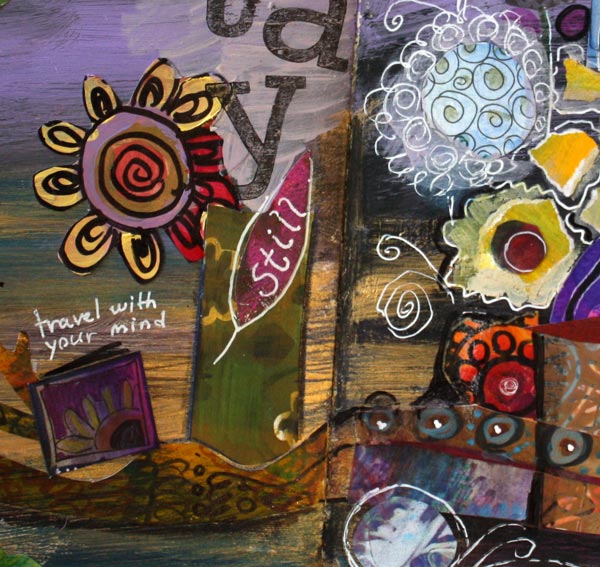
I kind of like how this first still life combines conventional elements like flowers with the more surreal ones, like the eye. The same contradiction is also seen in the color scheme: bright purples look mystical when combined with olive greens and warm browns.
Group the elements!
The principal of composition in still lives is simple. Just group the elements closely together!
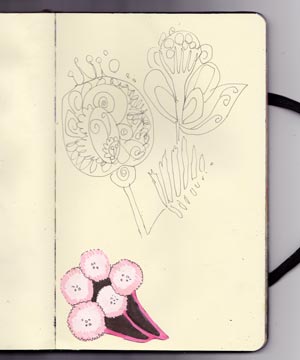 My art journals often have unfinished pages with elements here and there. This page had some doodles and a small illustration that I had drewn for a surface pattern. I often glue odd pieces to my art journals to save them. A page like this can be a great starting point for a still life!
My art journals often have unfinished pages with elements here and there. This page had some doodles and a small illustration that I had drewn for a surface pattern. I often glue odd pieces to my art journals to save them. A page like this can be a great starting point for a still life!
I started working this page by adding the text so that it creates the vase for the flowers. I emphasized that with colored pencils. Then I colored the soft background with colored pencils. The softness is a great contrast to the graphic element on the bottom.
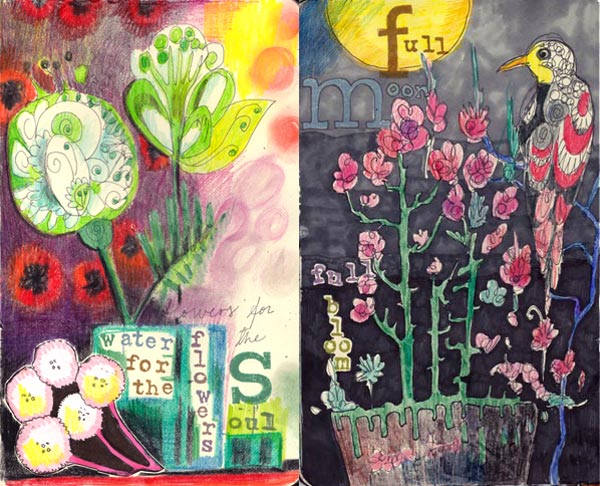
The third still life is formed around a doodle found on another page. It included just the bird and the flowers. I added the pot, stamped the text, colored the doodles with colored pencils and finally created the background with markers.
Why Are These Pages So Fast and Simple?
1) The starting point does not have to be grand, just some doodles, or paint, or odd pieces of paper.
2) Stamping few words tie the oddly placed elements easily together.
3) Coloring does not have to take a lot of time when it adds something new to the page.
More Still Lives
Watercolor 101 for Intuitive Painting – my video introduces an easy method which is especially suitable for surreal still lives and landscapes
A Formula for Composition – another way for creating a still life
Stretch Your Style – instructions to step out of the comfort zone, showcasing one of my favorite still lives
Visual Chronicles and Fast Art Journaling
In the newsletter sent 5th November, I mistakenly sent a wrong link, here’s the link to the latest video
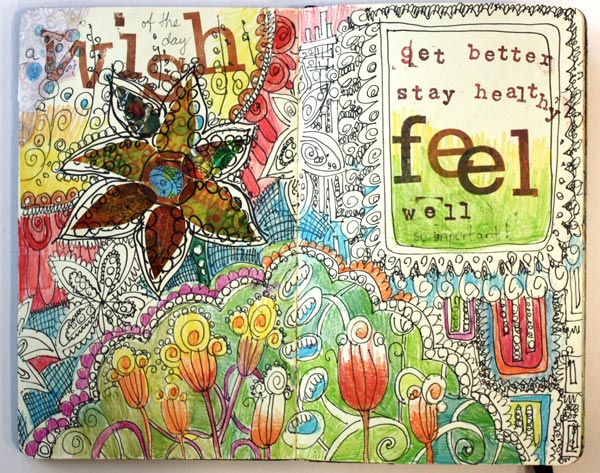
In Finland, the weather got colder last week and I got a terrible flu. It is so frustrating to be able to do nothing but sleep. Being healthy feels so important then!
If there’s anything positive in lying down and doing nothing, it’s the creative break. It is weird how much processing time some things require. In 2006, I saw a new book in Amazon.com. It was called Visual Chronicles. It was nothing like I had seen before and I felt strangely drawn to it. I was mesmerized by the concept of creating relaxed pages combining text, paint, simple illustrations and photos. Art journaling was a new word in my vocabulary.
I took the book everywhere. While reading it, I tried to understand what it is actually about. I picked a blank book and tried to fill its pages. It was so disappointing to see how horrible my pages looked and furthermore, I did not have good time when I created them. I browsed the book over and over again. I could not get it!
But I did not give up. During the time I bought more books and made more experiments. I also noticed that there seemed to be other people doing the same thing. I took some online courses and finally… My first art journal was finished in 2010! (See the journal and my first blog post about art journaling)
Four years of agony! And now when I read Visual Chronicles, everything that I had learned stands there so clearly! However, there was still one thing that had been bothering me from 2006. The pages in the book are very simple and still I find most of them visually appealing. But if I tried to do the same, the end result was nothing alike.
After sleeping two full nights and the day between, I finally figured it out! It is the stamped journaling that makes the pages stand out in the book! I had never tried to stamp the words as I have always hated handling the alphabet stamps. But I do own two sets and had many pages waiting for journaling!
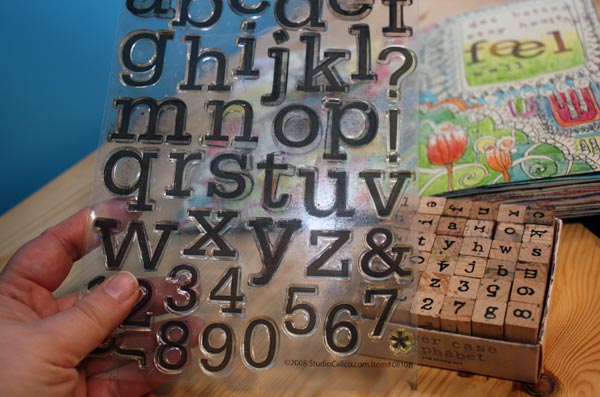
Now I am hooked!
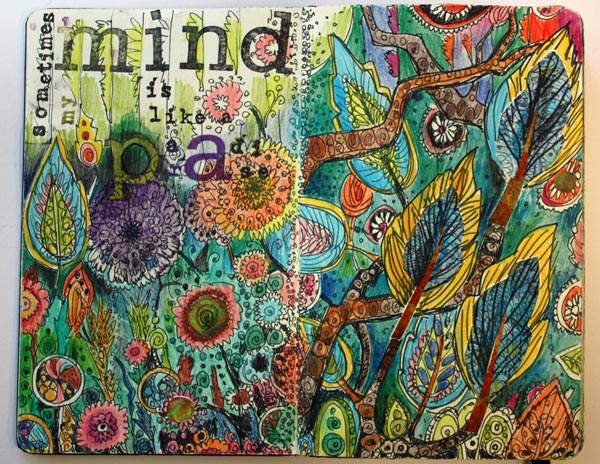
“Sometimes my mind is like a paradise”

“My life, my problems”
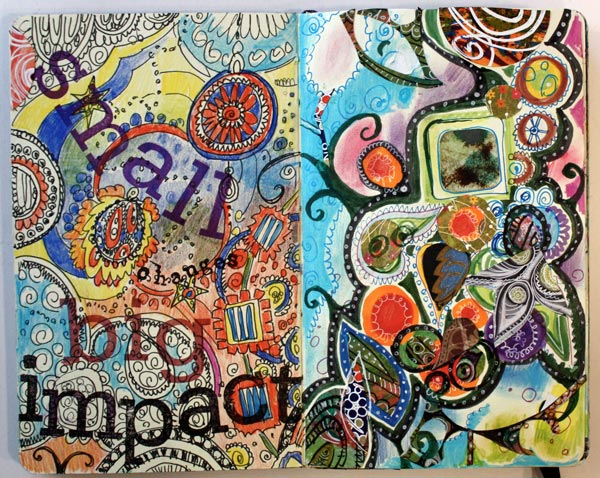
“Small changes, big impact”
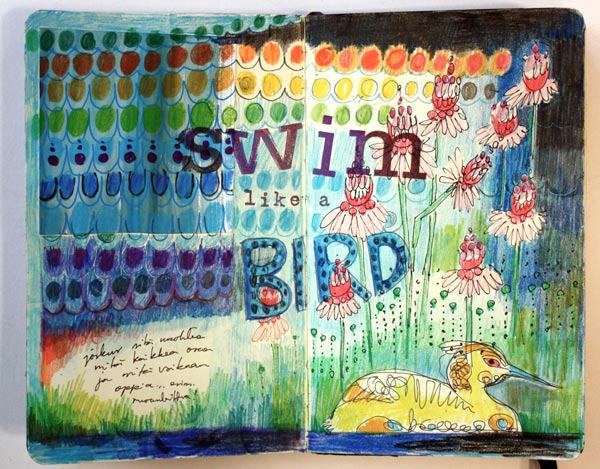
“Swim like a bird”
Visual Chronicles by Linda Woods and Karen Dinino is still one of my favorite art journaling books. It does not take art journaling too seriously. Linda and Karen also have a blog which is written with the same humorous attitude. “If you are alive you have succeeded” is one of their recent advices. While still recovering, it feels very relevant at the moment!
Tips for fast art journal pages:
1) Divide the making of the page into three phases: a) doodling with a black pen b) coloring the doodles c) adding the text
2) Use colored pencils for easy coloring. A Moleskine Notebook and the colored pencils work really well together.
3) Add the text by grouping stamped words with the doodles. Use big and small stamps to create contrasts.
4) Let your personal history of art journaling get recorded into your journals! If I could turn back time, I would not toss those first pages.
5) Buy the book: Visual Chronicles
Can You Draw?
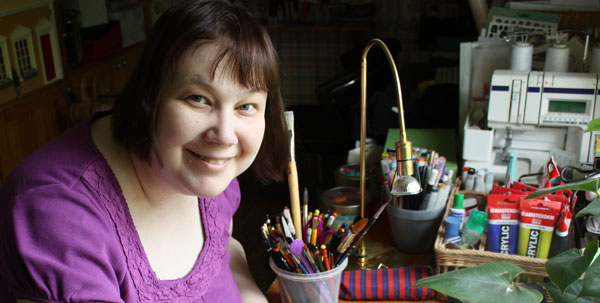
All my life I have wanted to learn how to draw. Whatever skills I have learned over the years, there has always been this one yearn: to know how to draw. Sometimes I have thought that I finally master the skill, only to realize it again: No, not yet.
But now, when most of this agony is over, I want to share my story and ask you: what does it mean when you say you can or can’t draw? People often say: “I can’t even draw a stick figure!” That probably means that they refuse even to try.
Drawing Stick Figures

My most humiliating moment connected to drawing was when I was about 8 years old, and we had to draw trees at school. “Do not make a mess,” the teacher said. But oh no, I did make a mess, and I had to watch my teacher show me how to draw a tree. The tree that she drew looked nothing like one. It was barely a branch, almost just a stick. At least it was not a living tree. I heard her sighing and saying that she could not draw either!
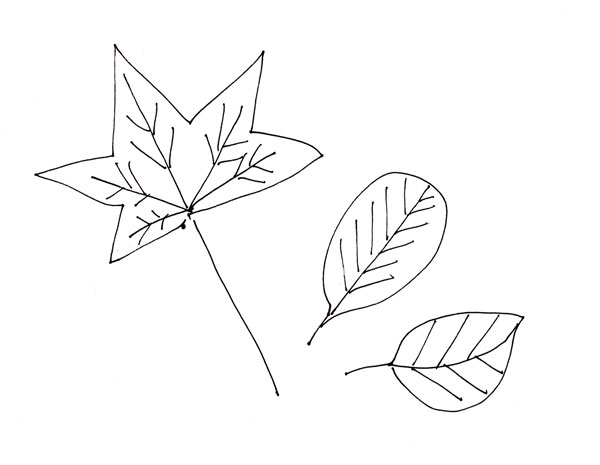
Drawing Realistic Images
I continued practicing. As a result, I realized that those who drew stick figures did not actually look at the object. When they were given the three leaves, they drew three symbols of leaves. So I thought that if I examined the objects like they were not leaves at all, I could draw them more realistically.
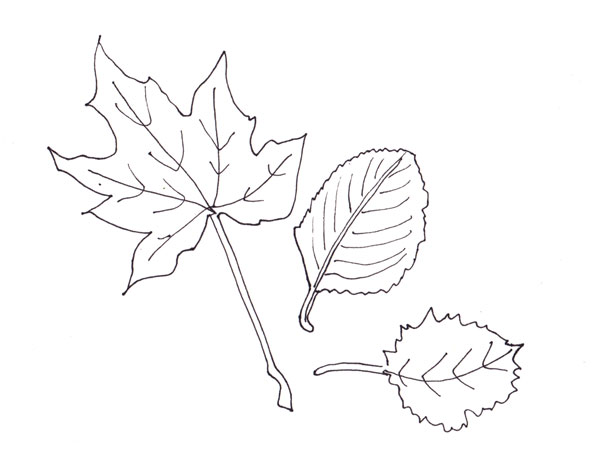
But the three leaves, which I brought home in a pocket, are beautiful, natural, living things. When I look at them I feel their presence and they evoke thoughts. They are not just flat objects either. If I drew how my eyes trace the leaves, how would that look like?
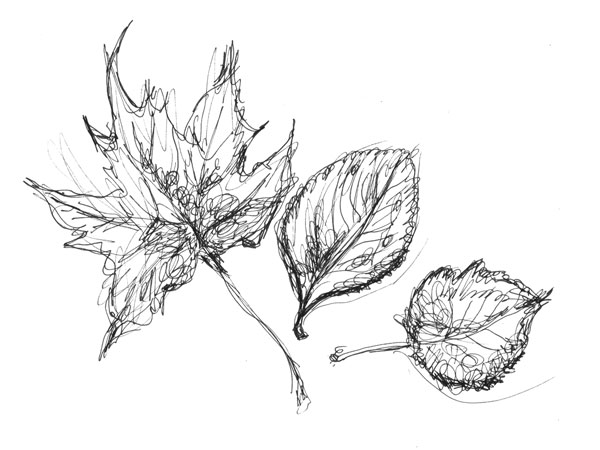
This is what I learned in my teenage years: I could use several lines for drawing, starting with thin and light lines and ending with strong dark lines. The result would not be bad at all, even if I made mistakes in the beginning. This was when I first assumed that I could draw. At least I was able to produce realistic looking pictures.
Drawing without Models
But soon, I got doubts. Browsing art books every week at the local library of the small hometown, I saw many outstanding masterpieces. The deeper I dived into the art history, the more I thought about the difference between copying and drawing from the memory. I assumed that most of the great artists had the ability to understand proportions and structures so that they could draw anything, without having a model or a photograph.

So I abandoned the models, mirrors, and other images. My goal was to draw whatever popped up into my mind. The amount of drawing that I had done had left marks in my memory. With some practice, I was able to draw ordinary objects, like leaves. But again, it did not satisfy me. I had discovered a new factor: a line. A line is not just a line. It is a kind of signature. It can be fast and effortless or slow and dull. And mine was more the latter.
I discovered artists who really can draw. Like Finnish female artist Miina Äkkijyrkkä. I envied those flowing lines. Meanwhile, I had graduated as an industrial designer. Should I get back to school again? And if so, where? I decided to learn by myself.
At this point, I have to tell you that I have learned many crafts by myself, and it has not always been very efficient. When I learned quilting, I refused to iron even if every quilting book said so. It took me ten years to master that skill, meaning: use that iron and acknowledge that it does make the difference. When I decided to learn drawing, I was afraid that I would omit something important again while rushing towards the goal. So I took a very slow approach. I figured out that if I start with a basic shape and make enough repeats, I will learn to draw. So I picked my favorite shape, a circle, and began doodling.
Drawing Styles
While learning to draw a circle with an expressive line, I realized that I could pick out my circles from those made by others. So I added a new factor to the definition of drawing: a style. I wanted to have my own style, my own line. Most evenings, after the day job, I drew circles examining my thoughts and the way of looking at the world. I learned that a simple circle could be a very complicated shape. And even more: when combined with other circles, it’s almost too complicated. You can draw small circles, big circles, closed circles, open circles, ovals … add circles inside another circle, build a tower with circles … I became fascinated by the circles. It felt like knitting: a small movement after another, and within few weeks, you will have something grand to look at!
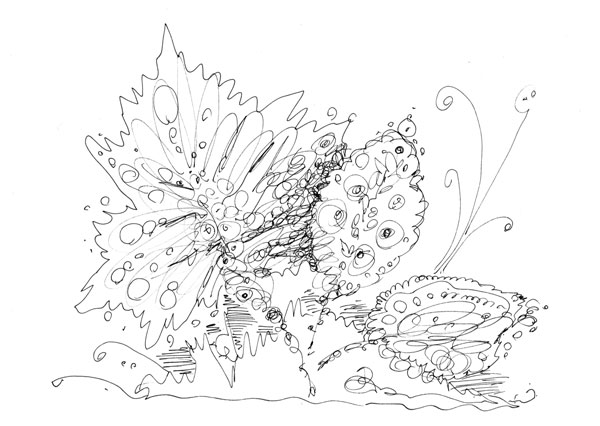
As months and months went by, I had a growing hunch that I had found my style. I became convinced that if I am brave enough to let that circle alter its shape, I can draw with my own voice. Once I jumped into that, I felt tremendous joy. Looking at the shapes flowing out of my pen was amazing. Could I finally call that drawing?
Then I remembered something that I had always loved: imitation. The joy of finding my own style changed to the urge to learn to imitate different styles. It would be so great to draw like many masters that I had admired since browsing the art books at the public library!
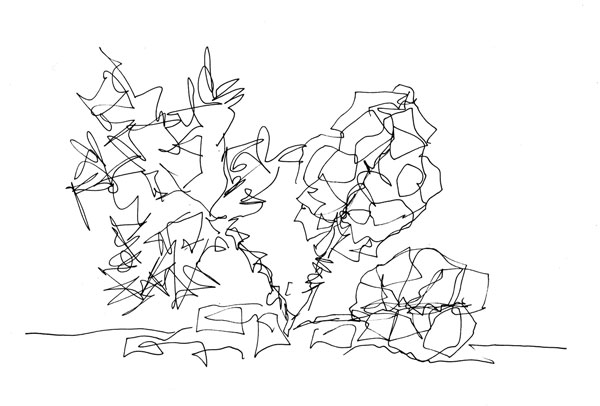
I wanted not only to draw like romantic, but I also wanted to draw in an edgy and masculine way.
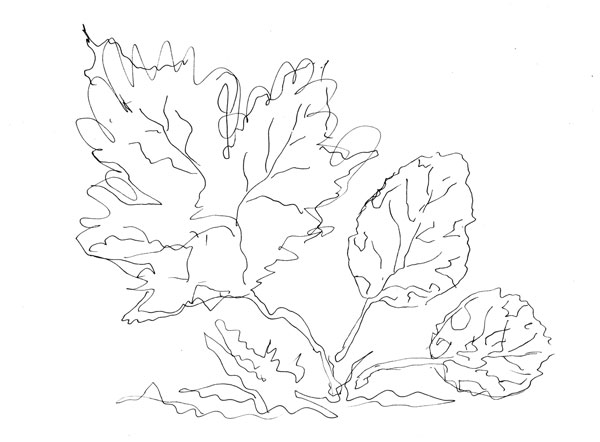
I wanted to simplify without taking the life out of the drawing.
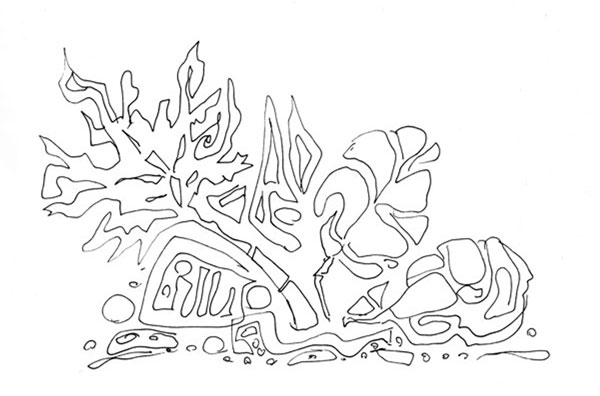
I wanted to learn various historical styles, like art nouveau.
Drawing from Imagination
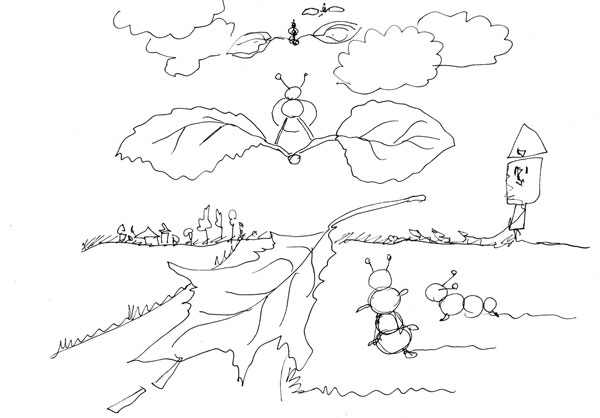
And I also wanted to learn to use the imagination and play with the theme. Wouldn’t it be cute if ants could use the falling leaves as airplanes? Then they would certainly have their own landing strip and air traffic control!
The Definition of Drawing
Then one day I realized that, for me, learning how to draw is not about me drawing. It is more about making you draw. I think that teaching drawing is my final definition about the ability to draw. That’s why I am currently creating a book about how to learn drawing in a way that is enjoyable and something very different from the tutorials you have seen around the internet and book stores.
Let me be your art teacher: Subscribe to my weekly emails!
